I'm working through the Java EE servlet tutorial and tried the mood example. I noticed the doFilter is getting called twice, once the servlet call is in the chain and the second time it isnt.
I added some printlns in the TimeOfDayFilter.java and in the MoodServlet.java to show this.
TimeOfDayFilter.java:
...
System.out.println("TimeOfDay before"); //added
chain.doFilter(req, res);
System.out.println("TimeOfDay after"); //added
...
MoodServlet.java:
...
response.setContentType("text/html;charset=UTF-8");
System.out.println("MoodServlet"); //added
PrintWriter out = response.getWriter();
...
The result from the glassfish server (3.1) window when calling the servlet is the following:
INFO: mood was successfully deployed in 406 milliseconds.
INFO: TimeOfDay before
INFO: MoodServlet
INFO: TimeOfDay after
INFO: TimeOfDay before
INFO: TimeOfDay after
Is this intended behaviour? If so, what is the reason for the extra call?
